










or its board of directors, Alabama
or its editors. Likewise, the appearance of advertisers, or their identification as Alabama
of the
or













or its board of directors, Alabama
or its editors. Likewise, the appearance of advertisers, or their identification as Alabama
of the
or

ello, my name is Ben Williams and I have the pleasure and privilege to serve as the Alabama Turfgrass Association President for the upcoming 2023 year. I have been in the turfgrass industry since 1997, and I am currently a Grounds and Maintenance Coordinator for the Community Services Flight at Maxwell Air Force Base in Montgomery, Alabama. I am an alumnus of Auburn University’s Agronomy and Soils program. I have been on the ATA board going on five years and in my new role as president, look forward to working more closely with our board members and educational advisors, as well as other educators, members, and sponsors for our industry.
Maintaining an ATA membership has great value to you and your company. There are many ATA events that serve as educational tools and others that allow you to connect with your fellow turfgrass industry leaders. For instance, there are educational opportunities at the ATA Road Shows starting in January 2023, as they travel across the state. Guest speakers share educational topics, industry vendors share their products, and it is an opportunity to obtain pesticide points for your pesticide applicator license.
The ATA is also heavily involved with the annual Deep South Turf Expo in Biloxi, Mississippi, where attendees have the same opportunities as experienced at the Road Shows, but on a much larger scale. It’s also a lot of fun! Thanks to all those who attended the 2022 DSTE and made this another successful Expo.
The ATA’s Poa Annua Golf Tournament raises funds that are donated to the Alabama Turfgrass Research Foundation for Auburn University turfgrass research. Last year’s golf tournament was at Inverness Country Club where guest speaker, James Spann, was very informative, and the course was in great shape. This year's event returns to Inverness CC on April 17, 2023. Save the date and be on the lookout for registration information to come.
On alternating years, ATA hosts a Lawn and Landscape Workshop and a Sports Turf Field Day. This year, we’ll be hosting the Lawn and Landscape Workshop at the Gardendale Civic Center. Watch for the date and details as they become available. If you are interested in hosting these events or any event in the future, please give me or any board member a call.
I would like to give a huge shout out to last year’s ATA president Ben Anderson, who was a great president and steered our organization through another successful year. We thank him for his service and continued support. He has been a great friend, colleague, and mentor. He will continue to serve on the ATA board as the Past President this coming year. Thank you, Ben!
Our organization owes a huge amount of gratitude to Melanie Bonds, Tricia Clem, and Kayla Cook, the Prologue Staff who manage this association. Thank you for your continued service to our organization. Kayla has stepped into ATA's Executive Director position. Melanie has stepped away from active meeting and event planning and management of the association. She will continue to help write and edit our magazine, Alabama Turf Times, along with Editor, James Horton. If you get the opportunity to see Melanie, give her a big bear hug and thank her for her many years of service as she enters the retirement phase of her career. And, if you haven’t met Kayla, introduce yourself and welcome her to the ATA.
For many years, it has been great to see Tricia every time I forgot to register and just showed up at an event. She always took care of me. I don’t recommend not registering in advance, but if you forget, Tricia is the person so see. Thank you, Tricia, for your continued support.
As I’m writing this, my first President’s Pen for our Turf Times magazine, I begin to understand how much work goes into this publication. The ATA has been very fortunate to have James Horton, who volunteers his time to our organization to deliver a great publication every quarter.
Last, but not least, is the well-deserved recognition that our sponsors and industry partners deserve. Whether past, present, or future, we value so much the support that our sponsors continue to give our organization. We plan to carry on that solid relationship with them to provide as many resources as feasible to our members. It is our hope that this bond would benefit both sponsors and members alike.
So now that 2023 is almost here, I am excited to look forward and share how this year with the Alabama Turfgrass Association unfolds. I wish everyone successful seasons, and God willing, a great year, as we share our passion of the outdoors, favorable weather, and that lush green grass!
Ben Williams
2023 ATA President

Ben Williams
2023 ATA
• Beard Equipment Company
• Envu, Inc.
• Greenville Turf & Tractor
• Harrell’s, Inc.
• Jerry Pate Turf & Irrigation
• Simplot, Inc.
• BWI Companies
• Corteva Agriscience
• Nufarm, Inc.
• Regal Chemical Company
• SiteOne Landscape Supply
• Syngenta
• Aquatrols
• Agromax
• BASF
• GreenPoint Pro
• PBI-Gordon
• Southern States Turf
• Sur-Line Turf
• Walker / Wright Mowers SILVER


Wewould like to recognize the individuals who have joined the ATA Board in 2022! Any organization is only as good as its leadership and the ATA has been blessed with wonderful members willing to serve and engage with our Association over the years. Thank you to all Board Members for their service.



We are pleased to welcome Lee Fillingim as our new board member, representing the Golf sector of ATA.
Lee initially graduated from Auburn University with a degree in Operations Management. Discovering that he was unhappy working indoors all the time, he returned to school and earned a degree in turfgrass management! Lee has worked as assistant and superintendent at several different clubs in Georgia for twenty years before he came to Anniston Country Club.
Lee is a member of the Golf Course Superintendents of America and has previously served as President of the Alabama Chapter of the GCSA. Lee has the distinction of serving as President during 2020 when everything was turned upside down and showed great leadership during that turbulent time.
Glenn grew up in Montevallo, AL and attended Auburn University, working as a student trainer for the football and baseball teams as a graduate assistant trainer. After receiving his master’s degree, he worked for the baseball team, charged with preparing and maintaining the field for the season and found a passion for field maintenance. In 1998, Glenn accepted a job with Southern Athletic Fields in Columbia, TN, as an outside sales representative covering Alabama and Mississippi. In 2008, he relocated to Petal, MS and continued in outside sales covering Alabama, Louisiana, and Mississippi. April 2018, SAF was acquired by Turface Athletics and his role shifted to Regional Sales Manager to also cover Texas and eventually Oklahoma.
Throughout Glenn’s career, he has been a member in the SFMA (formerly STMA), Alabama Turfgrass Association, Mississippi Turfgrass Association, Deep South Turf Expo Board Member and Tennessee Valley STMA Board Member. Since 1999, he has been involved in coordinating the grounds crew for the SEC baseball tournament in Hoover, AL. Glenn believes educational and field days, as well as simply networking with fellow members across multiple associations, can help promote the turfgrass industry and emphasize how important safe and playable fields are for athletes.
Glenn’s hobbies include officiating football games, riding motorcycles, cooking on the smoker and spending time with his family. We welcome Glenn as our new representative for Industry!
Blake Thaxton is the director at the Alabama Farmers Federation for the Greenhouse, Nursery, and Sod Division. He also has responsibilities as director of the Bee & Honey division and is the executive director of the Alabama Fruit and Vegetable Growers Association. As director he works with the members of the state committees of each division to promote and preserve the industry in the state of Alabama. Blake believes in Alabama agriculture and enjoys working with the industry to move every division forward. He will assume responsibilities as Sod representative.
Blake and has wife Katherine have four children and live in Auburn. As a family they enjoy involvement with their local church, attending Auburn University athletic events, and Blake also enjoys coaching his children’s youth sports teams. Blake holds a BS and MS in horticulture from Auburn University.

the time this issue is in hand, the Alabama Turfgrass Association will have a new online membership platform and web site. Star Chapter allows us to combine and streamline aspects of association management including Membership, Meetings and Events, and Website and Content management. This will make registration for our events and payment of membership dues more convenient for our members and increase member participation.
Please follow directions on the Star Chapter "Welcome" email to set up your username and password as a member. Please take time to explore the new ATA website and give us feedback. Login to the website requires registering with a username and password. Once members log-In they will have access to member only information, the ability to update your member profile, and, also register for meetings.
Thank you for your cooperation with this. If you have any questions, please contact Kayla Cook at cook.r.kayla@gmail.com.


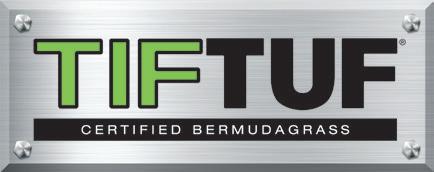
SPOTLIGHT ON Distinguished Service Award
This year’s Distinguished Service Award has been awarded posthumously to Jeff Higgins, Ph.D. Jeff passed away on April 8, 2022, and was survived by his wife, Stacy, and their children, Halle and Carter Ridgeway. Professionally, although he wore many hats, he was foremost an educator who helped generations of golf course superintendents and other professional turfgrass managers succeed through science and good management practices, not only in Alabama, but internationally. We offer our condolences to his family. Dr. Higgins will be greatly missed.
Jeff grew up on a cotton and soybean farm in northeast Alabama in the small town of Centre. As a kid, Jeff’s career plans were to stay home and run the family cotton farm. However, his dad, a farmer who owned an agricultural distribution business, was wise enough to know the importance and value of higher education.
Jeff spent ten years in college and in pursuit of his education. He was awarded his Bachelor of Science degree in Plant Protection and Pest Management from Auburn University. Jeff then received his Master of Science degree in Weed Science from Auburn University under the direction of Dr. Harold Walker. Jeff attributed his success to Dr. Walker — the work ethic and knowledge gained while working under his supervision fed his spirit. With Dr. Walker, Jeff was exposed to a wide range of herbicide research.
Jeff pursued his Ph.D. in Agronomy with emphasis in Weed Science and Turfgrass Physiology from Clemson University. Following that, he worked in the turfgrass industry for over 30 years, working in every aspect of the turfgrass business, from academia, chemical and fertilizer basic manufacturing, fertilizer and chemical distribution, golf course and sports field construction, and end user. Jeff started his career after college working with Monsanto.



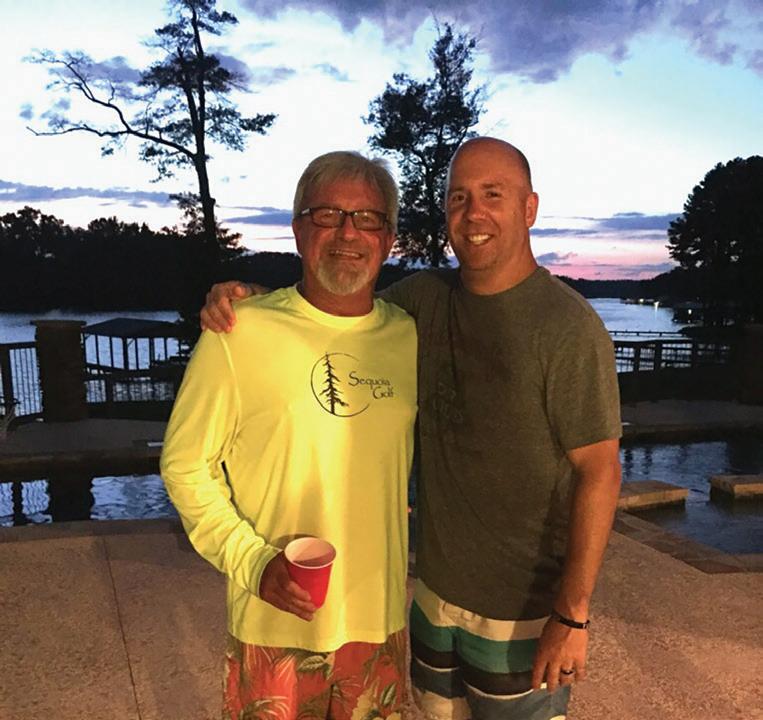







He helped develop, commercialize and launch Dimension turf herbicide, a product that is still used and trusted today, overseeing it from a numbered experimental compound to commercialization into the turfgrass and ornamental markets. Once this product was in the market for two years, Monsanto wanted him to move to Japan and be the Manager over Asia Pacific (Australia, Japan, and Malaysia). At that time, Jeff decided to move back to his roots.
Back home in Alabama, Jeff worked for Southern Turf Nurseries as their Agronomist in the golf course and sports field construction area. He gained much knowledge with this experience that proved to be invaluable later in his career. After employment at Southern Turf Nurseries, Jeff went back to Auburn University as Dr. Coleman Ward’s replacement as Extension Turfgrass Specialist for the state of Alabama. He expected this to be his last job in the turfgrass industry and planned to retire at Auburn University, but fate took another turn.
Offered the Director of Marketing position at Pursell Technologies, Jeff accepted. While at Pursell, Jeff worked closely with both Harrell’s and Simplot, as Pursell had joint ventures with these two companies. He was instrumental in developing the program at FarmLinks that was termed the PTI Tour and later became known as The Experience at FarmLinks. This program was used to demonstrate product and provide education on fertilizers and their use to customers from all over the world. He provided fertilizer education to over 10,000 customers over this ten year span at Pursell.
Following Agrium Advanced Technologies’ (AAT) purchase of Pursell Technologies, Jeff accepted a position with ValleyCrest Golf Course Maintenance in Calabasas, California where he was their Head Agronomist and directed the maintenance of 75+ golf courses across the US. Instead of selling to customers, Jeff became an end user himself. The eight years at ValleyCrest were a great experience and proved to be educational and broadened Jeff’s understanding of the turfgrass industry. He established some key relationships with several turfgrass distributors, as well as other large golf course management companies at this time. These relationships proved to be immeasurable over time.
Following his tenure at ValleyCrest, he accepted a position with Harrell’s as Vice President of Business Development on their executive team, primarily focusing on the management of National Accounts. This was a great opportunity, and he experienced a great deal of success. But, after six years at Harrells, Dr. Higgins career took another turn.
Simplot, a very large and diverse family-owned company based out of Boise, Idaho, was interested in expanding its footprint into the eastern US. Jeff had worked closely with Simplot in the past with a joint venture while at Pursell. The relationships formed back then were the basis of the opportunity to oversee this expansion for Simplot. While at Simplot Turf and Horticulture, Jeff created and led a team of over 60 employees. He oversaw their growth and expansion into the Southeast and beyond. Jeff’s success can be directly attributed to his fondness for people and his ability to form tight connections and relationships. Customers will remember him as a brilliant scientist who was a trusted advisor and a wonderful communicator regarding the complex world of agronomy.
Relationships were the driving factor in Jeff’s life and dictated his every move. Anyone who ever met Jeff will remember him as the fun-loving, generous, extravagant, flamboyant, selfless, loving man who loved God and who loved people. Thank you, Dr. Higgins. We will miss you.
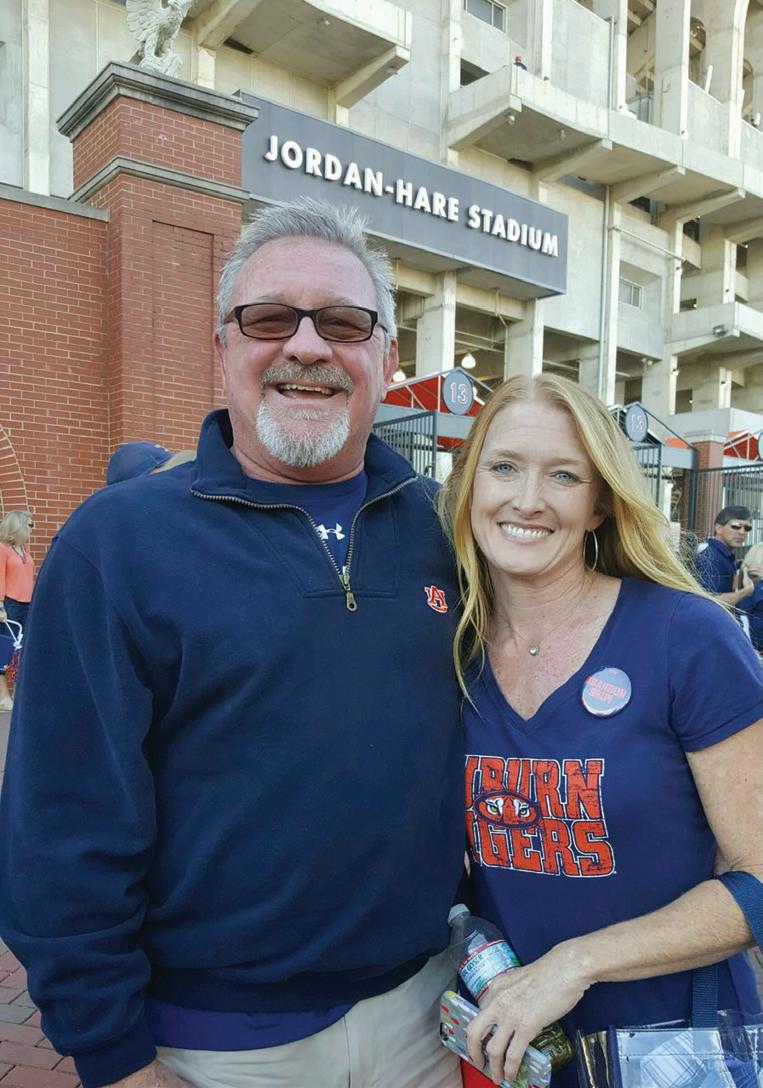



Where Will the Turfgrass Industry Be in Ten Years?
By Dave Han, Ph.D. Auburn University & Alabama Extension

Doyou ever wonder what turfgrasses will look like in a few decades? Compared to the year 2000, we have more options than ever. New varieties stretch the boundaries of where we can grow and what we can do with turfgrasses. What is going to be the next great turfgrass? Will we ever get a grass that actually loves shade? How much drought / salt / disease / insect tolerance will future turfgrasses have? What is the future of turfgrass breeding?
Ever since people first began cultivating turfgrasses, they have been looking for better turfgrasses. In response, turfgrass breeders at universities and companies, working together with the seed and sod production industries, have delivered. Here in the Southeastern US, the benefits of the past 20 years of turf breeding are all around us.
Today’s putting greens are faster and smoother than ever thanks to new varieties of bentgrass and bermudagrass. Sports fields look great, stand up to more abuse, and recover faster than ever. Warm season grasses are being used farther and farther into the traditional cool season zone thanks to better cold tolerance. Seashore paspalum is making sports fields, fairways, and even greens and tees better in saline and shady environments. But we are really just starting to see the fruits of a decade’s worth of cooperative work.
Pictured: Newer varieties with superior cold tolerance are making it possible to take advantage of bermudagrass’ wear tolerance and fast recovery in more northerly locations. The lawn at the United States Capitol in Washington, D.C. recently transitioned to ‘Tahoma 31’ bermudagrass, with perennial ryegrass overseed to maintain color during the winter. The conversion was done in stages from 2019 – 2021. Tahoma 31 is a variety developed using funding from the USDA Specialty Crops Research Initiative multistate grant. (Photo by Dr. Dave Han)





Another view of the lawn at the United States Capitol in Washington, D.C. which recently transitioned to ‘Tahoma 31’ bermudagrass, with perennial ryegrass overseed to maintain color during the winter. (Photo by Dr. Dave Han)
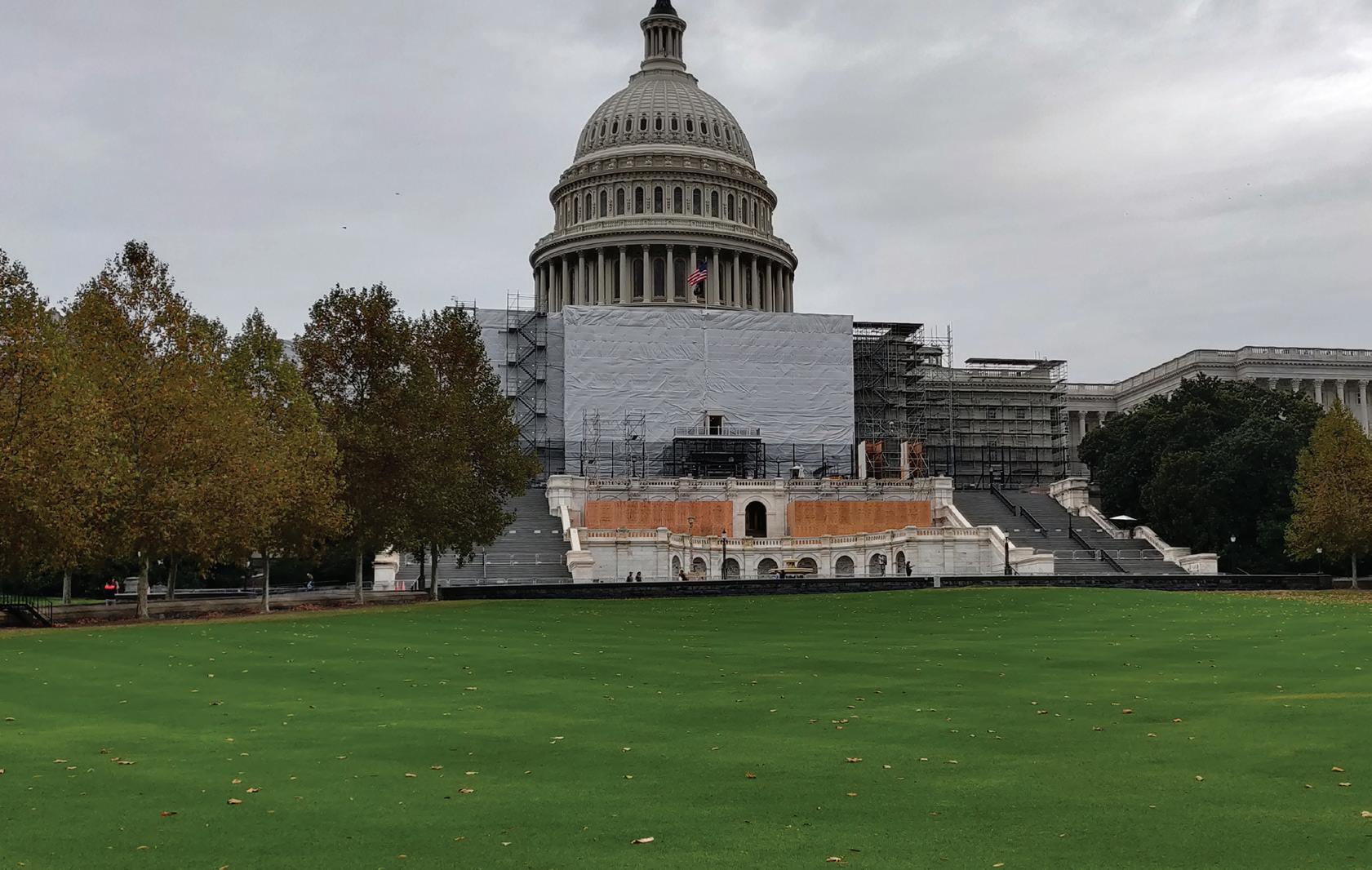
One of the most important events in modern turfgrass breeding at universities came in the late 2000s, when turfgrass researchers became eligible to apply to the United States Department of Agriculture’s Specialty Crops Research Initiative (SCRI). This opened up the possibility for turf breeding programs across the country to cooperate with each other to secure large amounts of funding for turf breeding to address important issues – primarily drought tolerance and salt tolerance. In 2010, some of the biggest turf breeding programs came together to submit a proposal entitled “Plant Genetics and Genomics to Improve Drought and Salinity Tolerance for Sustainable Turfgrass Production in the Southern United States.”
The proposed cooperative efforts by Texas A&M, Georgia, Florida, N.C. State and Oklahoma State to develop warm season grasses and was funded to the tune of $3.8 million over five years. The funding was renewed in 2015 for $4.3 million and again in 2019 for $7.96 million. In the second grant, the scope was widened to include other traits such as wear, traffic and herbicide tolerance, and to establish a molecular side to the project to find genetic markers to assist breeders in finding germplasm with desirable traits. The third grant continues the molecular work and also included money to fund research to quantify water savings in the varieties developed to increase their use over varieties that need more water. All of the grants provide money not only for marketing the varieties developed, but also fund field demonstrations, educational materials, field days, etc.
This was something of a game changer in the university turf breeding world. Not only did these grants increase cooperation between breeding programs at different universities, they also included money for demonstrating and promoting the improved turfgrass varieties with the goal of increasing adoption of new varieties. Although university turfgrass breeding programs have always found ways to publicize their releases, the new pool of money has made more demonstration projects possible and has increased awareness of new varieties even more.
The fact that new varieties from university breeding programs are being entered into the National Turfgrass Evaluation Program (with entrance fees partly funded by SCRI money) means that they are released with years of performance data from sites all over the country. This helps to speed acceptance and adoption of the new varieties. This trend should continue as the NTEP program continues to make its data reporting system more user-friendly.
A good example of rapid adoption is in bermudagrass. ‘TifTuf’ and ‘Tahoma 31’ are just two examples of many varieties released in the past ten years that have gained rapid widespread acceptance and use. Go back to varieties from 2011, and varieties such as ‘Latitude 36’ and ‘Northbridge’ are also very popular. We may even be past the point where good old ‘Tifway’ has been replaced, at least for high-end golf courses and sports fields. There will still be ‘Tifway’ on lawns for decades to come, but it is safe to say that we have seen the end of its dominance after more than half a century.
The same is true for zoysiagrasses. New varieties from both universities and from private companies have put a big dent in the demand for ‘Meyer’ and ‘Emerald.’ Again, the fact that the newest varieties come with years of NTEP and other testing, increases their acceptance rate.



Although warm-season breeders were the first to receive funding from SCRI, northern universities followed suit when they were awarded a $5.4 million grant in 2017. Titled Increasing Low-Input Turfgrass Adoption Through Breeding, Innovation, and Public Education, this project aims to increase the adoption of improved fine fescues in cool season turf in order to reduce inputs such as irrigation, fertilizer, and mowing. This project involves scientists at the University of Minnesota, Rutgers, Purdue, Oregon State, Wisconsin, and the USDA-ARS. This effort focuses on the lesser-used fine fescue species as alternatives, especially in lawns, as alternatives to traditional cool season species. The goal is a widespread reduction in inputs (again, especially irrigation and fertilizer) over a large acreage of turf.



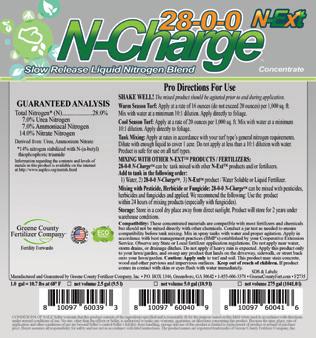




The prevailing traits that will characterize new turfgrasses in the foreseeable future is the ability to withstand more extreme environmental conditions while still providing superior performance. The original focus of the SCRI project was to produce more drought tolerant grasses, and while those have been delivered, drought stress and conflicts over water use are likely to increase over much of North America, so this will continue to be a strong point of emphasis for the foreseeable future.
The search for turfgrasses that can do more with less will extend to nutrients and shade too – in the future we will be growing varieties that require less fertilizer and less light than the ones we use now. This will expand the range of turfgrasses, as will the continued development of better tolerance to cold, salt, and other detrimental environments. The development of more dense and competitive grasses could also lead to less weed encroachment and less need for herbicides.
Experimental zoysiagrass varieties in the National Turfgrass Evaluation Program (NTEP) being rated for spring greenup at Auburn, AL. NTEP evaluations play a key role in providing data to breeders about how their varieties perform in a wide variety of environments. (Photo by Dr. Dave Han)

The new ultradwarf bermudagrass ‘Tif3D’ (seen here at TPC Sawgrass, Ponte Vedra Beach, FL) is an example product of the continued efforts of plant breeders across the southeast. (Photo courtesy of Dr. Brian Schwartz, University of Georgia)
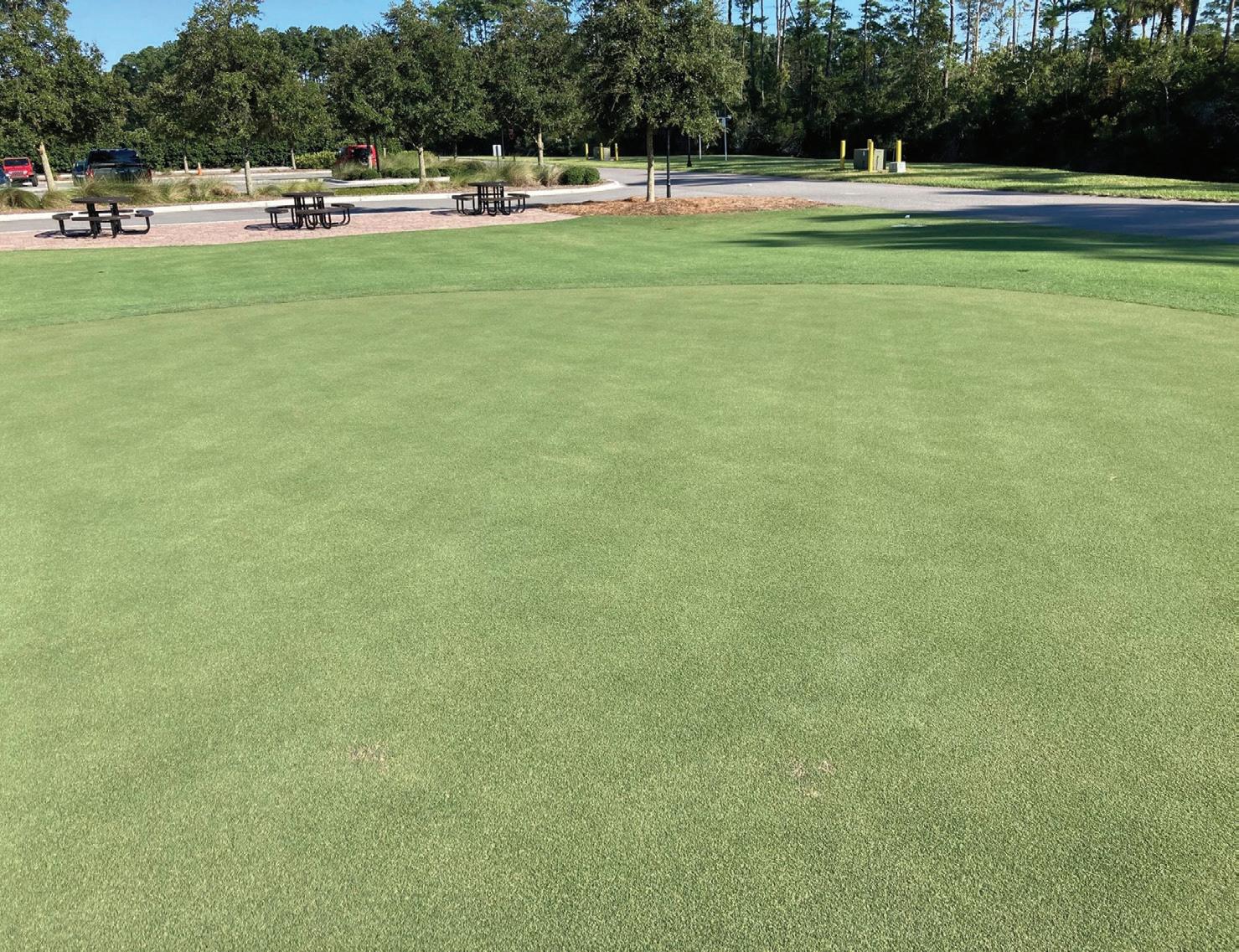
Improving drought tolerance is one of the top priorities of the Specialty Crops Research Initiative (SCRI) cooperative project among Southern turfgrass breeders. Here, bermudagrasses are evaluated for color retention under drought conditions at Stillwater, OK. (Photo courtesy of Dr. Yanqui Wu, Oklahoma State University)
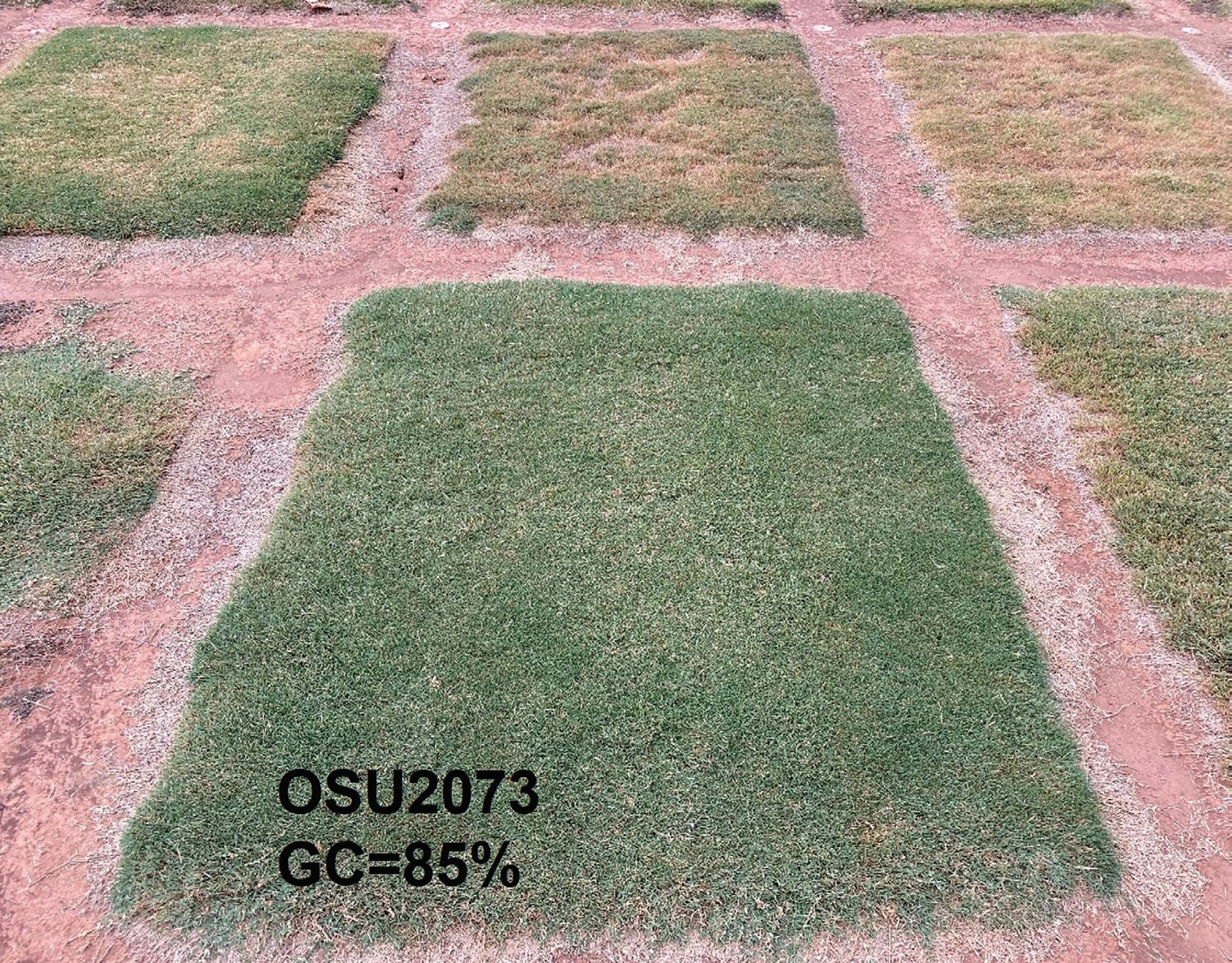
The amount of money made available for sustained periods of time is important in plant breeding, which is not a fast process. The focus on environmentally sustainable traits, especially drought and salt tolerance, is producing more and more varieties that can be maintained with lower inputs. This saves both money and natural resources.
The research into finding genetic markers for traits that enhance resistance to environmental stress is bearing fruit. University breeders are learning how to use them to identify plants with these traits. This saves time by allowing breeders to skip some initial screening tests thus allowing plants into breeding programs more efficiently. This should mean that the flow of improved varieties will continue for many years to come. It should also increase the flex-
ibility of breeding programs. As breeders learn more and more about the genetics of turfgrasses, they will be able to identify traits more easily – even traits that may only become desirable years from now as environments change. The research being done today will help to keep turfgrasses thriving under yet-unknown challenges.
The goal remains to make turfgrasses more sustainable by requiring less inputs. This in turn requires increasing their tolerance to environmental insults. This overarching goal will remain the same in the future, even if the inputs being focused on change. Turfgrass is an easy target for those who think that it is a resource hog, so there will always be a need for better varieties, and better awareness by the public of just what turfgrasses can do.
Gouveia, B. T., Rios, E. F., Nunes, J. A. R., Gezan, S. A., Munoz, P. R., Kenworthy, K. E., Unruh, J. B., Miller, G. L., Milla-Lewis, S. R., Schwartz, B. M., Raymer, P. L., Chandra, A., Wherley, B. G., Wu, Y., Martin, D. L., & Moss, J. Q. 2021. Multispecies genotype x environment interaction for turfgrass quality in five turfgrass breeding programs in the southeastern United States. Crop Sci. 61:5, 3080–3096. https://doi.org/10.1002/csc2.20421
Katuwal, K. B., Jespersen, D., Bhattarai, U., Chandra, A., Kenworthy, K. E., Milla-Lewis, S. R., Schwartz, B. M., Wu, Y., & Raymer, P. 2022. Multilocational screening identifies new drought-tolerant, warm-season turfgrasses. Crop Sci. 62:4, 1614–1630. https://doi.org/10.1002/csc2.20726


Schwartz, Brian M., Wayne W. Hanna, Lisa L. Baxter, Paul L. Raymer, F. Clint Waltz, Alec R. Kowalewski, Ambika Chandra, A. Dennis Genovesi, Benjamin G. Wherley, Grady L. Miller, Susana R. Milla-Lewis, Casey C. Reynolds, Yanqi Wu, Dennis L. Martin, Justin Q. Moss, Michael P. Kenna, J. Bryan Unruh, Kevin E. Kenworthy, Jing Zhang and Patricio Munoz. 2018. ‘DT-1’, a Drought-Tolerant Triploid Turf Bermudagrass. HortScience53(11):1711-1714. doi: 10.21273/ HORTSCI13083-18





USDA National Institute of Food and Agriculture. Specialty Crop Research Initiative (SCRI) https://www.nifa. usda.gov/grants/programs/specialtycrop-research-initiative-scri


By Paul Bartley, Ph.D., Assistant Professor, Department of Horticulture, Auburn University
Contributing: Jeff Atkinson, Ph.D., Harrell’s and Alex Hedgepath, Auburn University
Since discovering and understanding plant hormones, plant growth regulators (PGRs), both naturally and synthetically derived, have been used to suppress or promote plant growth. Their applications have varied from industry to industry to address varying critical issues. In the 1950s, early adopters like the grape and apple industries primarily used PGRs for blossom and fruit thinning to improve marketable yields. The floriculture industry has used PGRs extensively for half a century to meet the plant specifications of their picky clientele (I’m looking in the mirror here). In the 1970s, utility arborists began applying PGRs commercially to combat the age-old problem of trimming trees away from utility lines. But for the professional landscape operator, PGRs haven’t become mainstream. Instead, their utilization has been more niche.
Take Auburn University’s campus for example. With over 700 acres of landscape to maintain, the use of PGRs is primarily limited to maintenance hazards. “We’d like to start using more PGRs on campus, but right now, we are only using them around fences and barriers that are difficult to mow around,” said Wes Miller from Auburn University Landscape Services. So, why aren’t PGRs more widely used in landscape management? The research convincingly favors their applications regarding enhanced blooming, improved plant health, and less frequent pruning. Like many changes to common practice, market penetration and adoption rates are primarily

driven by economics. That is exactly what the research could not demonstrate convincingly. At least, not 10-20 years ago when most of the work was conducted. Things have changed. Today, the value-added proposition is less about economics and more about labor conservation.
With an evaporating labor pool and demand for services at an all-time high, landscapers like Toby Hughes with Auburn Grounds Inc. have begun incorporating PGR products into their management practices. For them, it wasn’t as much about economics as it was about managing labor reallocation and boosting morale. “Our guys dislike pruning. It was easy to convince them to spray PGRs instead of picking up the hedge trimmers.” Others, like Dennis Pritchett from JubileeScapes think it’s a “win-win, a game-changer. Our customers receive a healthier plant, and we save three or four crews a summer of pruning. The manufacturers are doing a better job educating and that’s helping us communicate the advantages to our clients.” The manufacturers are noting the change as well. “I’ve had about twice as many requests to present on landscape PGRs this year compared to the last three or four years prior,” Dr. Kyle Briscoe, Senior Technical Development Manager with SePRO, remarked. He added, “I think the labor market is driving a lot of first-time use.”
For those looking for an extra hand, it’s essential to understand the various PGR formulations available in the market and how they might be best utilized.

1: Maintenance hazards, like this temporary fence adjacent to a busy road, pose a risk to those tasked with regularly maintaining it. This is a perfect niche application for PGRs to assist with risk management.
2: This photo of boxwood edging was taken 4 months after pruning. Cutless 0.33G was applied to the edging right of path. Boxwoods to the left of the path were untreated.

3: Uniform coverage is key with foliar PGR sprays. This dwarf Burford holly was treated with Cutless Quickstop on the left, and untreated on the right side of the

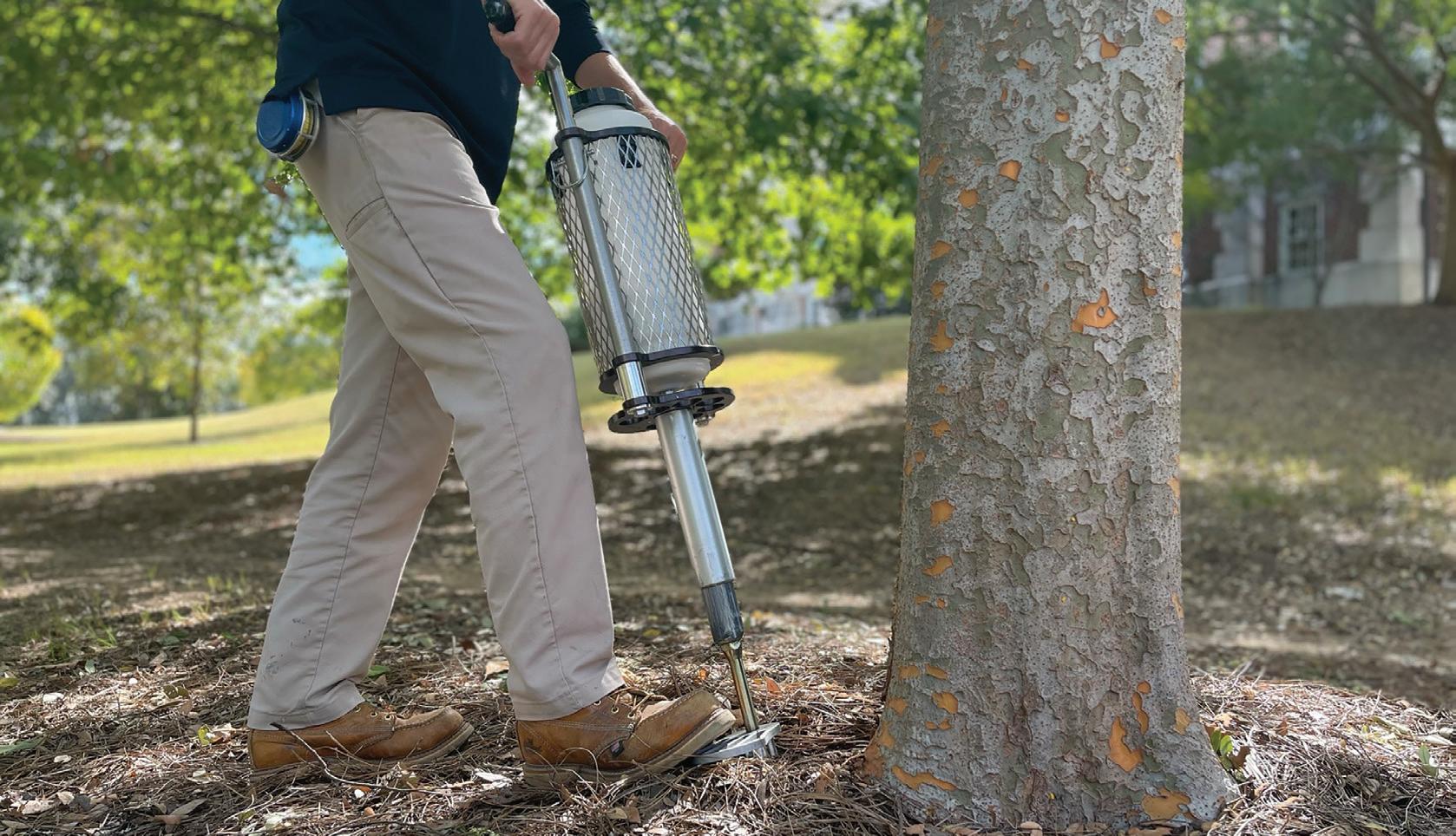
It’s challenging to beat the simplicity of a granular application. Measure the application area, weigh the granules, and evenly distribute them across the treatment area. Perhaps this simplicity and our familiarity with granules often lead to misapplications and varying results. You understand if you’ve
ever striped a yard following a granular fertilizer application. Timing is critical with this formulation. Depending on several factors (species, plant size, and environmental conditions), granular applied PGRs need time for release, uptake, and translocation to the meristematic regions of the plant. As a general suggestion, these products are best used immediately after pruning.
Cutless 0.33G Flurprimidol
Herbaceous ornamentals, groundcovers, and woody shrubs
Flurprimidol & Paclobutrazol Shrubs and trees 4 – 12' in height
Does calibration keep you up at night? Rest well knowing that concentration with liquid foliar applications of PGRs is most important. Relative to granular products, foliar applications are fast acting. For these reasons, foliar applications have quickly become the preferred method of PGR applica-
Atrimmec
tion in the landscape. Shortly after a flush of new growth, mix the appropriate concentration and apply evenly until drip occurs. Leaf cuticle thickness, plant vigor, and environmental factors may influence the longevity of regulation. For the savvy landscaper, a combination of granular and foliar spray products may extend the effectiveness of PGRs. As always, follow the label to avoid exceeding application thresholds.
Dikegulac-sodium
Cutless QuickStop Flurprimidol
Shrubs and groundcovers, flower and fruit suppression
Herbaceous perennials, groundcovers, and shrubs
Herbaceous bedding plants and shrubs

Trees are often the most significant investment and liability in the landscape. Whether they are century-old oaks, newly planted 'Princeton' elms, or established sugar maples in the middle of a construction zone, arborists and urban forestry specialists utilize PGRs to minimize tree stress. As it's often impractical to apply a foliar spray, the preferred application method for trees and large shrubs is direct soil injection or drenching around the trunk's basal flare. Like granular applications, these products will take time to translocate to the meristematic regions of the stems. As always, read the label carefully. The dosage requirements for trees vary by species sensitivity and size.
I was told Burton Sperber, founder and “Head Gardener” of ValleyCrest Companies, once said, “The economy can slow, but the grass always grows.” If the grass…or woody ornamentals…are growing a little too quickly for you, consider the new value proposition PGRs have to offer.
*The products mentioned in this article are only examples of PGR products, not an exhaustive list or an endorsement of any product*
Author: Paul Bartley, Ph.D. has been an Assistant Professor, Department of Horticulture at Auburn University since 2019. His appointment is 60% Research and 40% Teaching. He received his B.S. and Master of Science at Auburn University and his Doctor of Philosophy in Horticulture Science from North Carolina State University. He can be reached by email at paul.bartley@auburn.edu

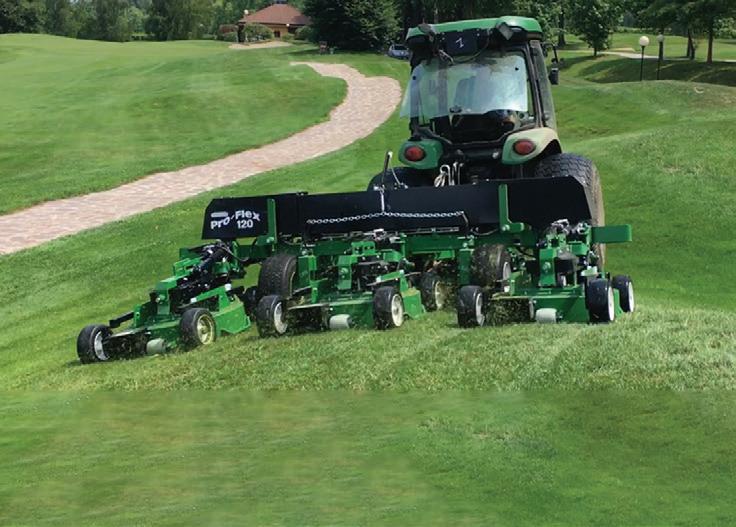

Alabama
January 11, 2023
Loxley Road Show
January 25, 2023
Dothan Road Show
February 1, 2023
Montgomery Road Show
February 15, 2023
Gardendale (Birmingham) Road Show
February 22, 2023
Huntsville Road Show
Auburn Field Day TBA
April 17, 2023
POA Annua Classic
Inverness Country Club Birmingham, AL
August 30
Lawn and Landscape Workshop
Gardendale, AL
October 17 – 19
Deep South Turf Expo
Biloxi, Mississippi
Tel:
Fax:
Email: mailbox@alaturfgrass.org www.alaturfgrass.org
Published by:
Tel: (615) 790-3718
Fax: (615) 794-4524
Email: info@leadingedge communications.com
Executive
Industry
Institution Drew Charcandy University of Alabama
of
EX OFFICIO / EDUCATION ADVISORS
David Han, Ph.D. Auburn University (334) 844-3980 handavi@auburn.edu
Jim Jacobi, Ph.D.
Alabama Cooperative Extension System (205) 879-6964, Ext. 19 jacobjc@auburn.edu




Create ballfields that fans and players love with the Toro Field Pro 6040. This workhorse features efficient operation with the innovative MultiTool™, ergonomic operator comfort, and incredible versatility in attachment options. The dedicated platform produces a consistent, superior infield playing surface regardless of starting conditions. Precision engineering means precise results. With the Field Pro 6040, it’s game on.

